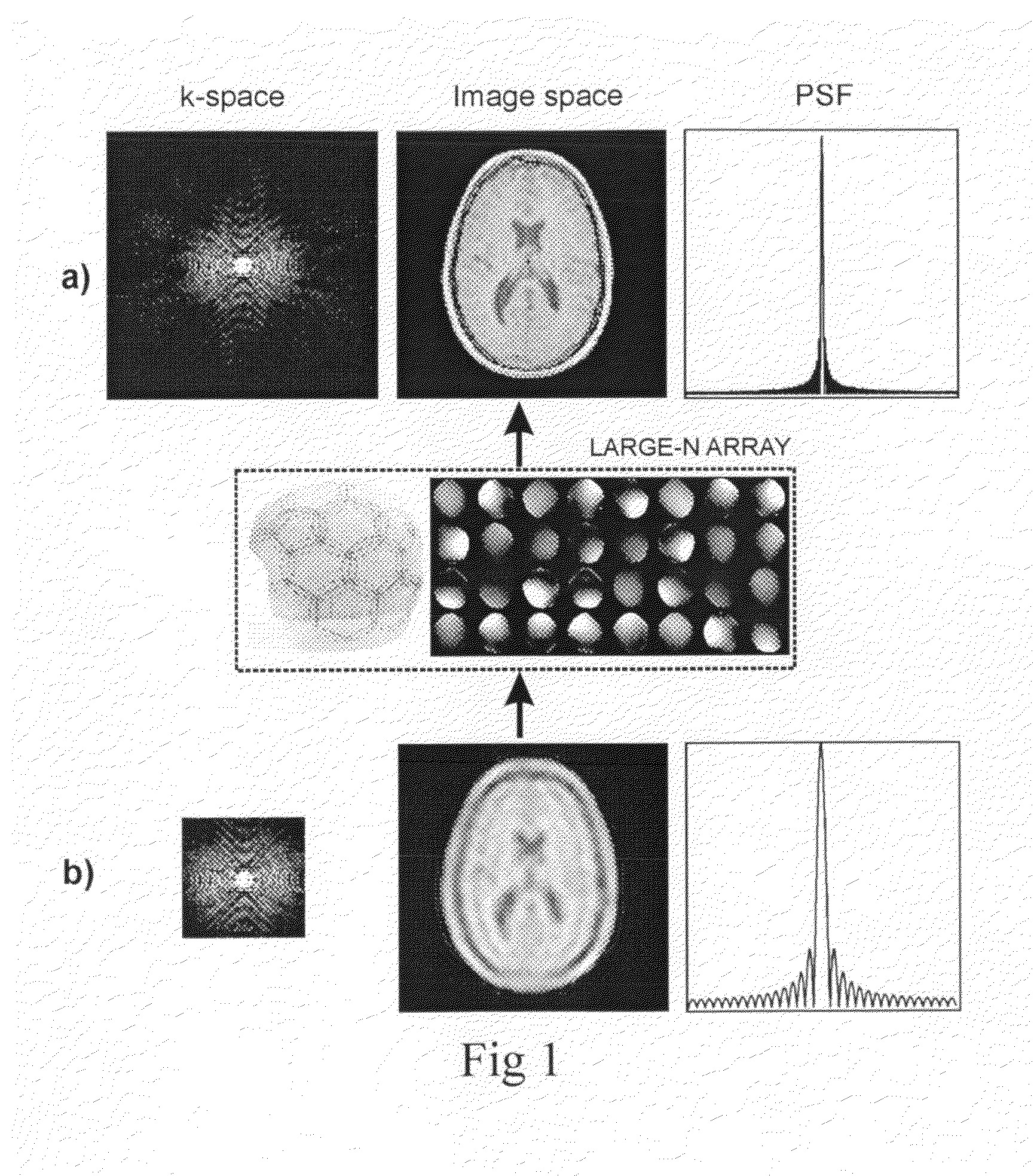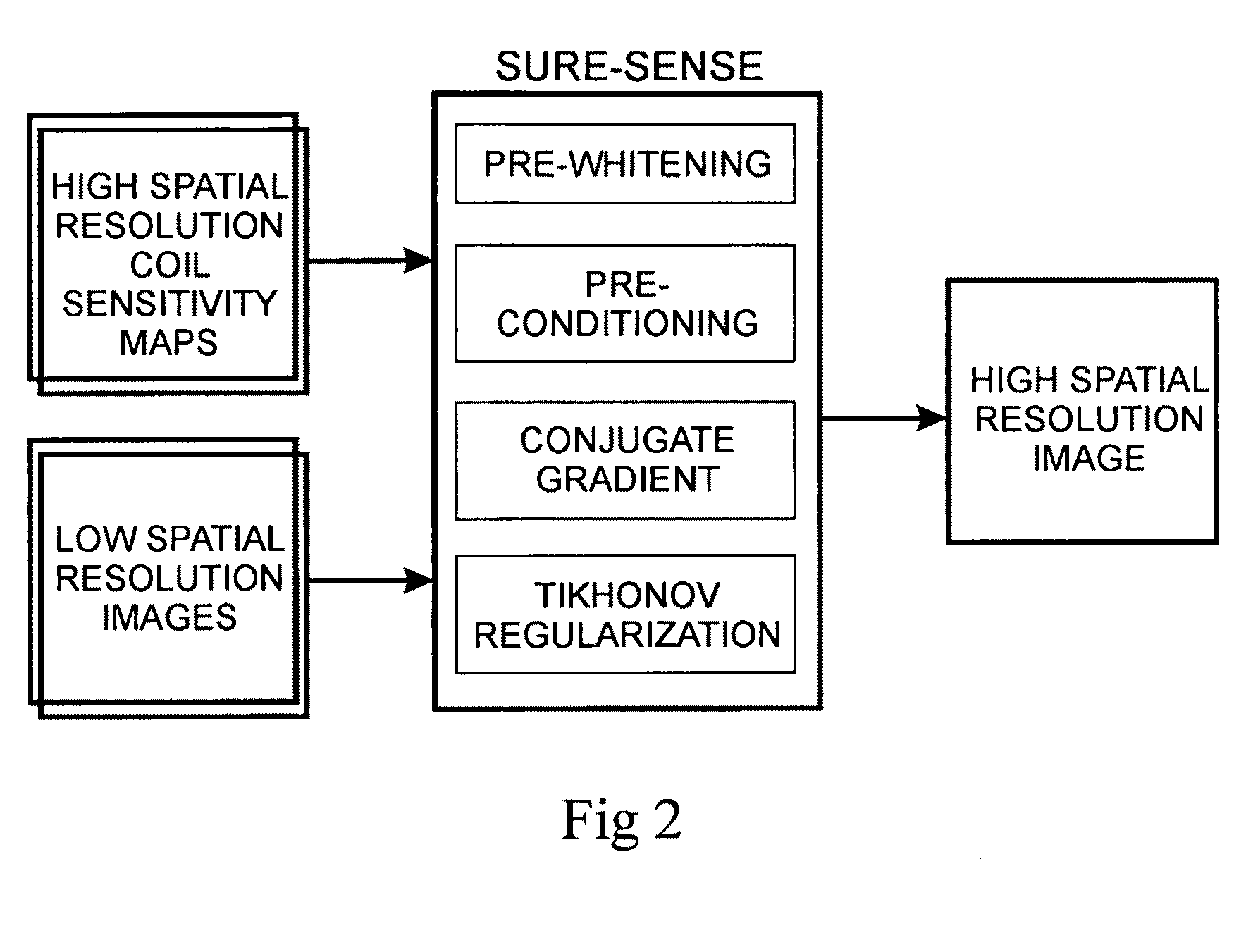Superresolution parallel magnetic resonance imaging
a parallel magnetic resonance and superresolution technology, applied in the field of parallel magnetic resonance imaging techniques, can solve the problems of limited spatial resolution and gibbs ringing, method performance is good, information over only a limited k-space range is usually acquired, etc., to achieve the effect of increasing the spatio-temporal resolution, reducing the acquisition time, and achieving the goal of spatial resolution
- Summary
- Abstract
- Description
- Claims
- Application Information
AI Technical Summary
Benefits of technology
Problems solved by technology
Method used
Image
Examples
Embodiment Construction
[0018]The system and method of the present invention are described herein with reference to their preferred embodiments. It should be understood by those skilled in the art of magnetic resonance imaging that numerous variations of these preferred embodiments can be readily devised, and that the scope of the present invention is defined exclusively in the appended claims.
[0019]FIG. 1 shows the superresolution SENSE idea where a single image with higher spatial resolution is reconstructed from fully-sampled low resolution images acquired with multiple receiver coils using high resolution coil sensitivity maps. Since the image acquired by each coil is weighted by the corresponding spatial sensitivity of the coil, superresolution reconstruction is feasible if the different sensitivities are varying within the low resolution image voxel.
[0020]FIG. 2 shows the flowchart of the reconstruction process. SURE-SENSE is formulated in the image domain following the generalized parallel imaging m...
PUM
 Login to View More
Login to View More Abstract
Description
Claims
Application Information
 Login to View More
Login to View More - R&D
- Intellectual Property
- Life Sciences
- Materials
- Tech Scout
- Unparalleled Data Quality
- Higher Quality Content
- 60% Fewer Hallucinations
Browse by: Latest US Patents, China's latest patents, Technical Efficacy Thesaurus, Application Domain, Technology Topic, Popular Technical Reports.
© 2025 PatSnap. All rights reserved.Legal|Privacy policy|Modern Slavery Act Transparency Statement|Sitemap|About US| Contact US: help@patsnap.com



